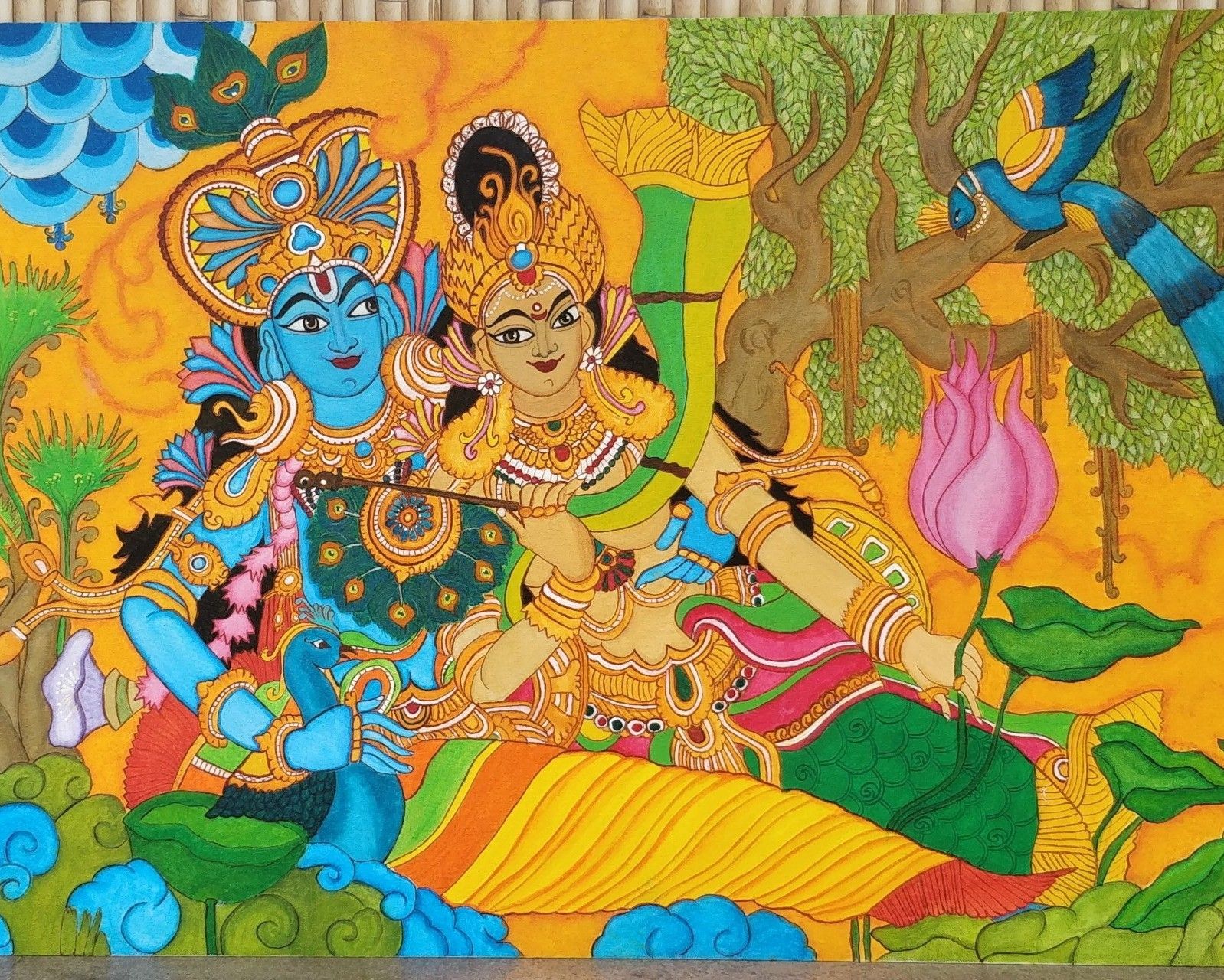Kerala Murals: The Storytelling Walls

Imagine walking into a temple or palace and seeing beautiful paintings covering the walls, each one telling a story from long ago. That’s what Kerala murals are—colorful, detailed paintings that bring myths and legends to life!
These murals are a special part of Kerala’s art and history. Let’s dive in and explore their beauty!
What Makes Kerala Murals Special?
A mural is a painting done directly on a wall. Kerala murals are unique because they use bright natural colors, detailed designs, and graceful figures. These paintings mostly show gods, goddesses, and scenes from ancient Indian stories.
Unlike modern paintings, which use artificial paints, Kerala murals are made using colors from nature, such as:
- Red – from red clay or stones
- Yellow – from tree sap
- Green – from leaves
- Black – from burnt coconut shells
- White – from limestone
These murals can be found in temples, palaces, and even churches, making them an important part of Kerala’s heritage.
A Peek into the Past
Kerala murals have been around for more than a thousand years! Many of them were painted between the 9th and 19th centuries when kings encouraged artists to decorate temples and palaces with beautiful paintings.
Some of the most famous places where you can see Kerala murals are:
- Padmanabhapuram Palace – A royal palace with stunning murals.
- Mattancherry Palace – Also called the Dutch Palace, it has murals of Hindu gods.
- Vadakkunnathan Temple – A temple with centuries-old mural paintings.
- Ettumanoor Mahadeva Temple – Famous for its painting of Lord Shiva.
Even after so many years, these paintings still look bright and beautiful!
How Are Kerala Murals Created?
Making a Kerala mural takes time, patience, and great skill. The process involves:
- Preparing the Wall – The wall is coated with a smooth mixture of limestone and glue.
- Sketching the Design – Artists draw the picture using fine lines.
- Adding Colors – Natural colors are carefully applied layer by layer.
- Final Touches – Artists add details to make the painting look realistic and lively.
Since the colors come from natural sources, they last for hundreds of years without fading!
The Stories Told by Kerala Murals
These murals are more than just decorations; they tell stories! Many of them are based on Hindu mythology, featuring:
- Lord Krishna’s Adventures – His playful childhood, dancing, and heroic deeds.
- Scenes from the Ramayana and Mahabharata – Two famous Indian epics full of action and drama.
- Shiva, Vishnu, and Other Gods – Painted in majestic and divine poses.
- Animals, Birds, and Nature – Adding beauty and life to the artwork.
Each painting is full of tiny details that make the stories come alive!
Kerala Murals Today
Even though these murals are ancient, the tradition is still alive! Many artists today are learning this traditional art and creating murals on canvas, walls, and even clothing. Some people also decorate their homes with Kerala mural designs.
There are even special schools where students learn this art form, ensuring that it continues for future generations.
Interesting Facts About Kerala Murals
- The largest Kerala mural is at Guruvayur Temple, showing over 100 scenes from Krishna’s life!
- Artists don’t use erasers—every brushstroke has to be perfect!
- Some murals are over 1,000 years old, yet their colors still look fresh.
- Unlike regular paintings, Kerala murals blend art with storytelling, making them truly unique.
Kerala murals are not just paintings—they are a window into history and mythology. These colorful and intricate artworks show the creativity of past artists and keep old stories alive.